Winter Natural History
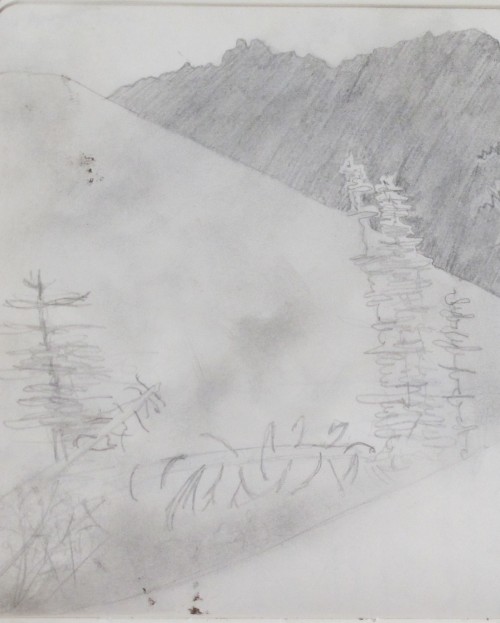
Every year, graduate students at North Cascades Institute are tasked with keeping a Natural History Journal. At the end of each quarter we turn in ten selected journal entries to our professor. Having recently turned in my fall journal, natural history has been on my mind.
If you’re like me, you have a lot of questions when first given this assignment: What is a “natural history journal” anyway? What if I’m not good at drawing? What constitutes “one entry”? What do I write about? Do I have to sit outside in the cold for hours trying to draw and make observations about plants? Is it supposed to be scientific?
On a chilly December day, all of us in Cohort 12 sat down with the Institute’s Curriculum Coordinator and resident Amazing Artist, Katie Roloson, for a lesson in nature art and nature journaling.
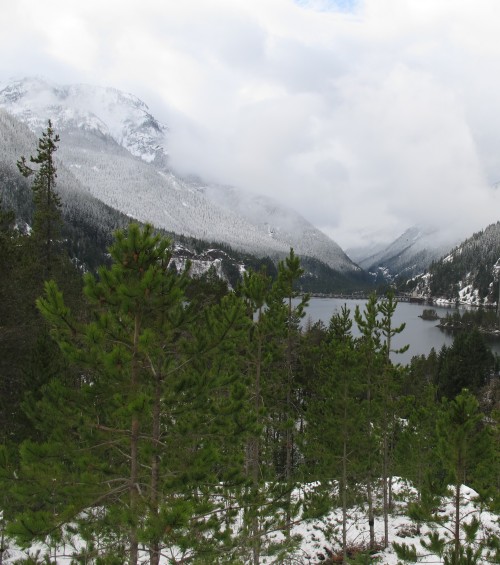 a dusting of snow makes for a cold day outside
a dusting of snow makes for a cold day outside
Katie taught us journaling techniques, covering how to draw landscapes, different kinds of trees, perspective, shading…and I realized that my ineptitude with art comes more from my lack of patience than from actual non-talent. I suspect it’s like this for a lot of people. You have to really see what you’re trying to draw. You have to take note of all the details, at least in your head, even if you don’t put every detail on the paper.
I discovered that I don’t just have to sit outside for hours and draw plants. I can also take natural history topics that I’m interested in and learn more about them, research online or in books, and then relate it to things I find outside where I live. I can take something that I saw briefly (like the day I saw a baby bobcat running around the Learning Center), learn more about it, and then draw it, even though my memory of it is short and I didn’t have paper (or even a camera) with me at the time.
Here is a sampling of what I’ve done so far.
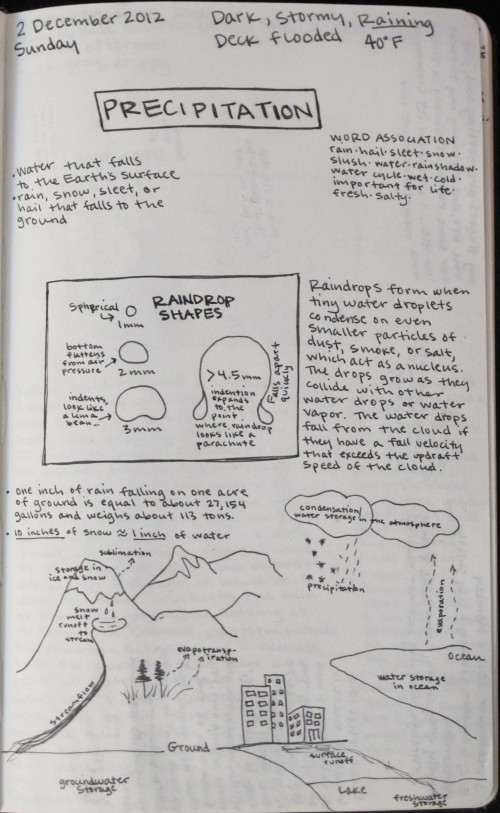 Learning about precipitation – drawing on lower half of page shows a complicated water cycle
Learning about precipitation – drawing on lower half of page shows a complicated water cycle
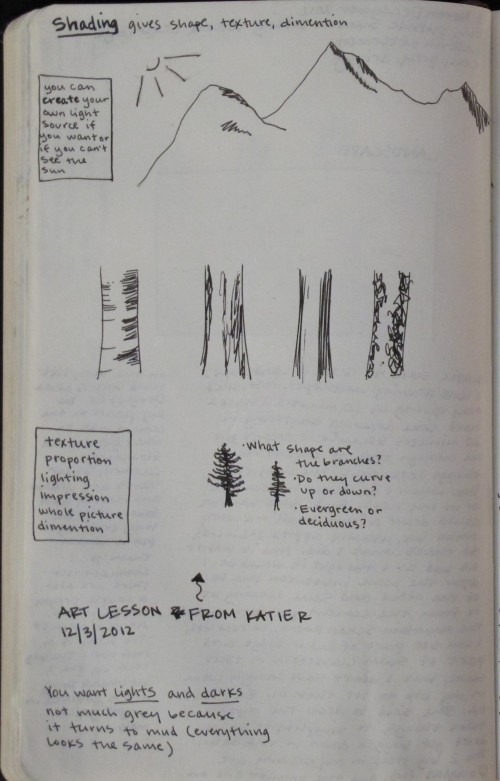 A lesson on shading and texture for natural objects
A lesson on shading and texture for natural objects
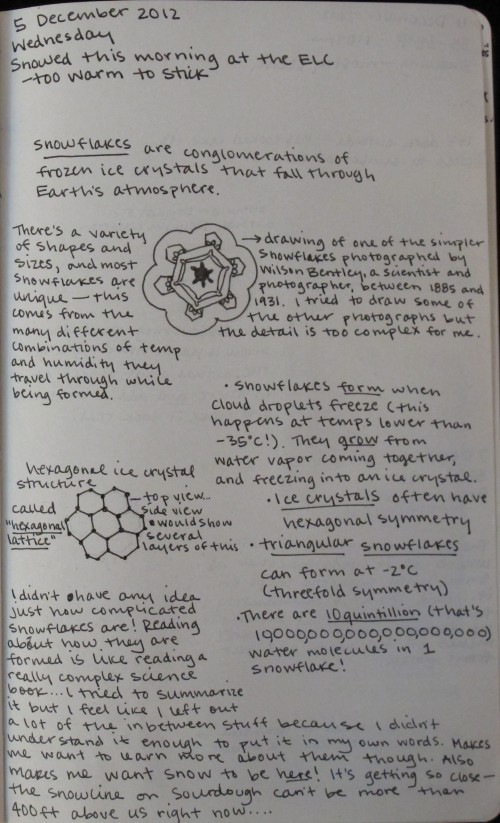 Learning about the complexities of snowflakes (as well as some research to find out how many zeros are in a quintillion)
Learning about the complexities of snowflakes (as well as some research to find out how many zeros are in a quintillion)
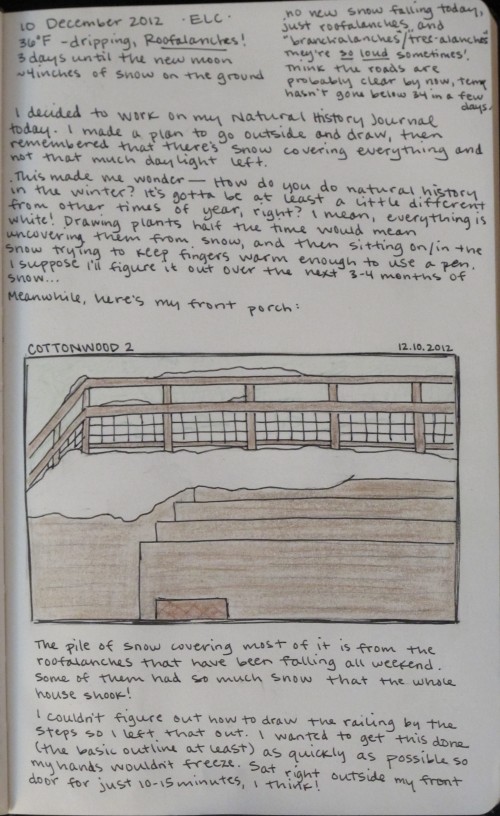 Trying to do some natural history in the snow
Trying to do some natural history in the snow
If you’re interested in starting your own nature journal, here are some basic guidelines to get you started. Think of them as suggestions, however, and make it your own. There is no wrong way to do it.
- Information to include in each entry
- date
- location
- time
- weather
- your impressions of what you’re looking at
- a reflection
- When setting up a page, mark out space for the drawing before you write anything
- Drawing a scene/landscape
- simplify —> what is most important to capture
- start with a quick sketch —> try for 5 minutes
- closer = bigger, darker, more detail
- farther away = smaller, lighter, blend together more
- take note of where the light source is (you can make it up if you want, but make sure it’s consistent throughout the drawing)
- pay attention to proportions
- Drawing tools
- pigment pens (ink won’t bleed if paper gets wet)
- “artist quality” colored pencils (with a softer lead so you can blend them)
- Take a look at Keeping a Nature Journal: Discover a Whole New Way of Seeing the World Around You by Clare Walker Leslie and Charles E Roth. It’s a pretty good reference if you’re just starting out or are looking for additions or variations in keeping your journal


Great field notes and drawings—inspiring!